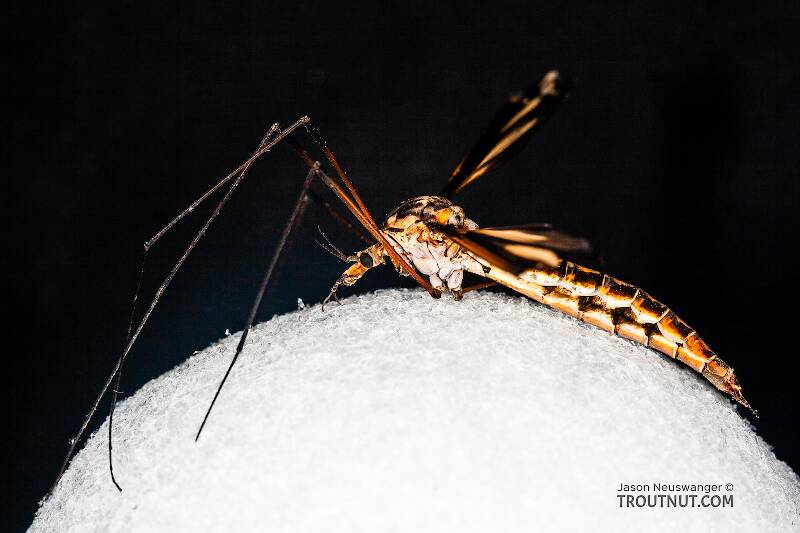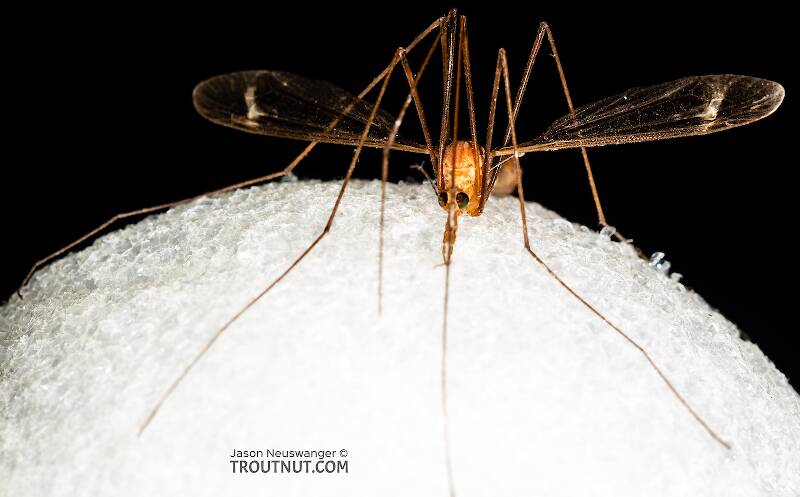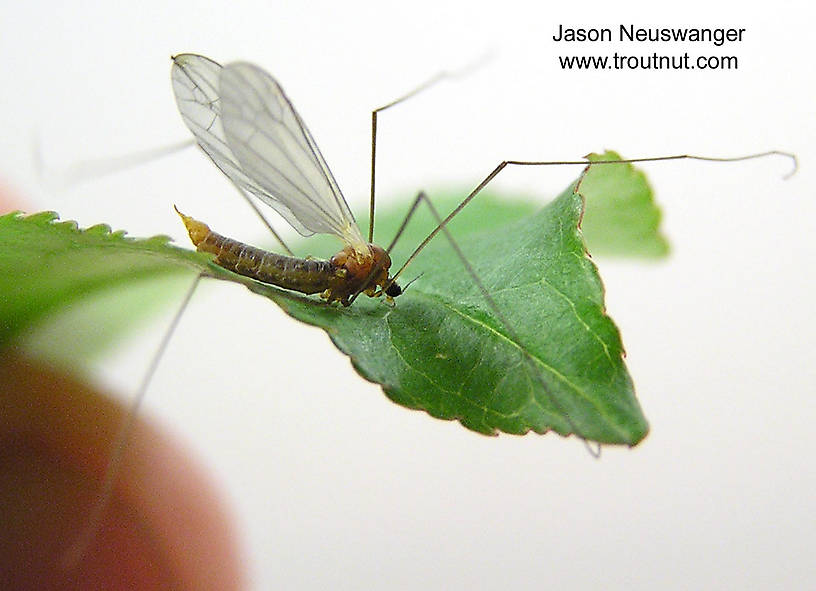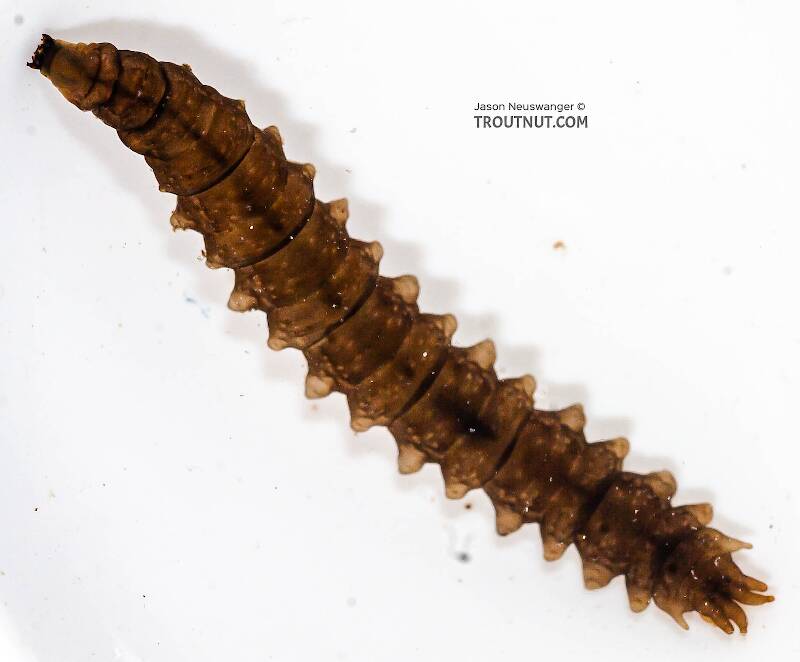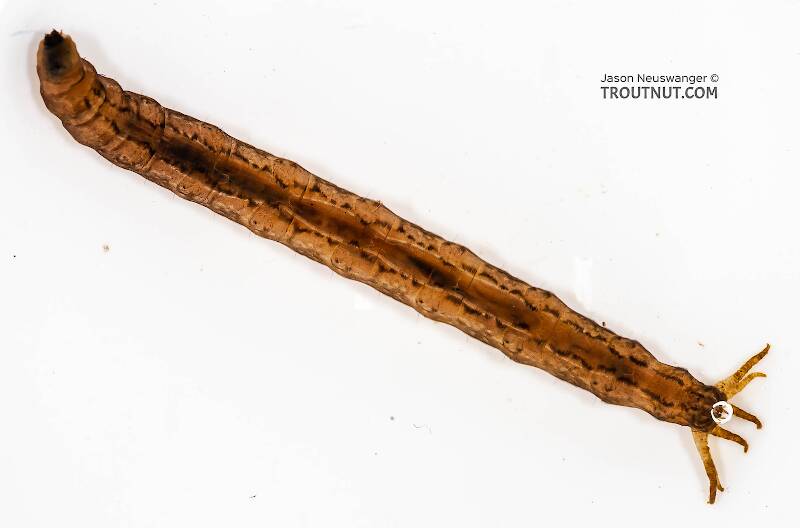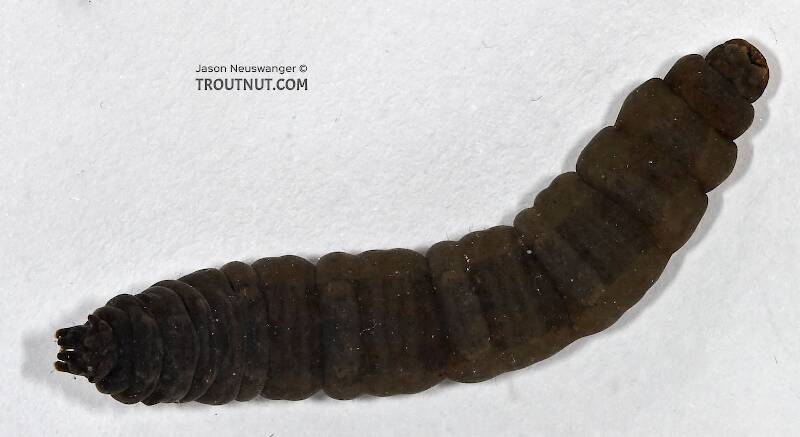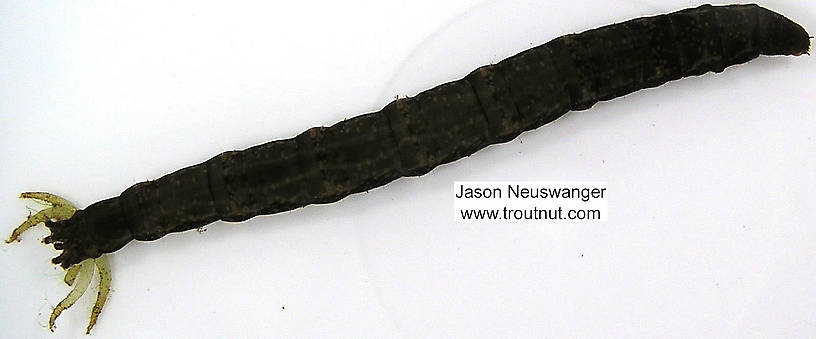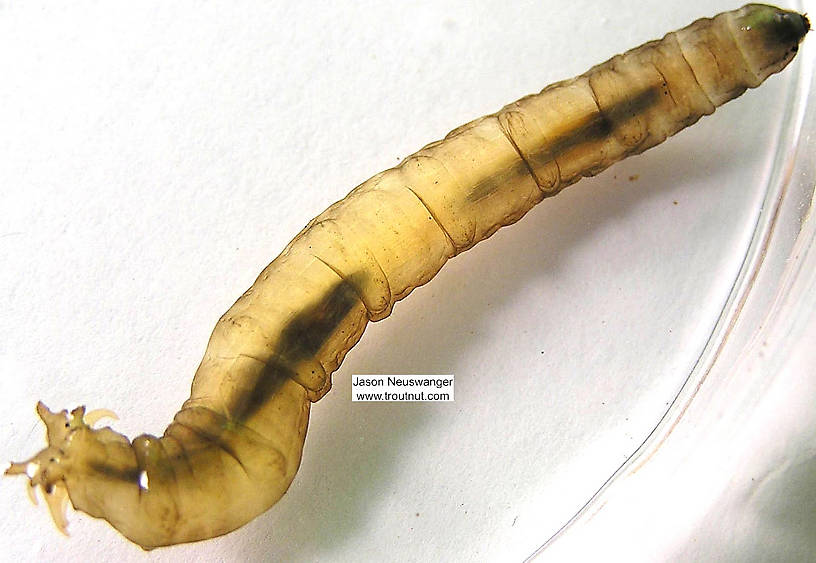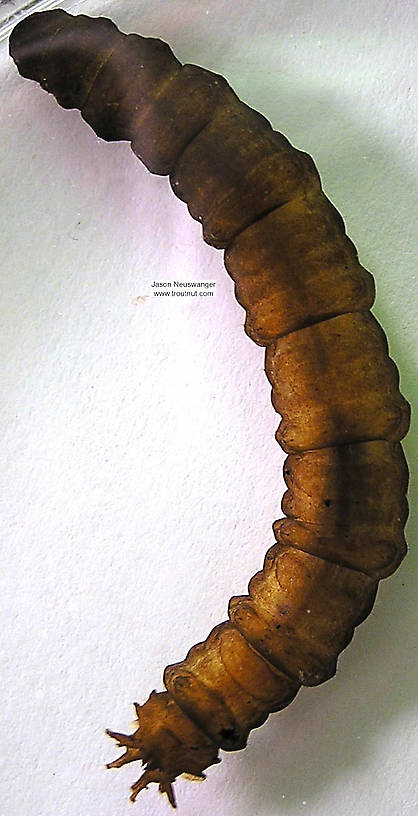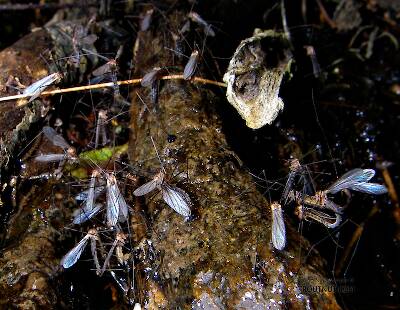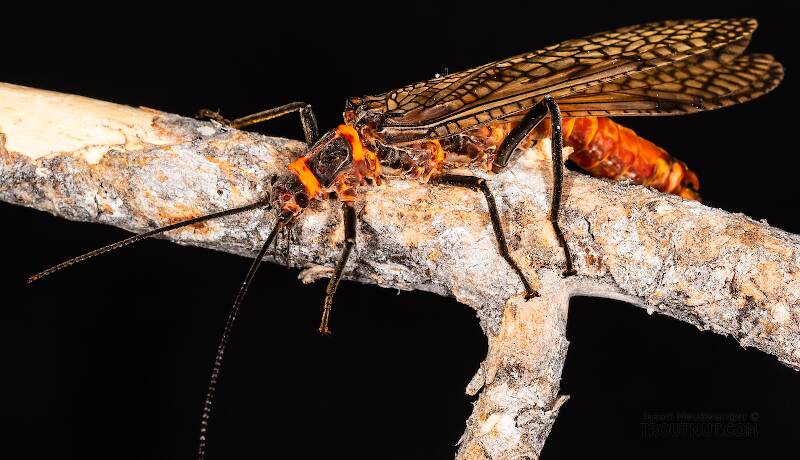
Salmonflies
Pteronarcys californica
The giant Salmonflies of the Western mountains are legendary for their proclivity to elicit consistent dry-fly action and ferocious strikes.
Featured on the forum
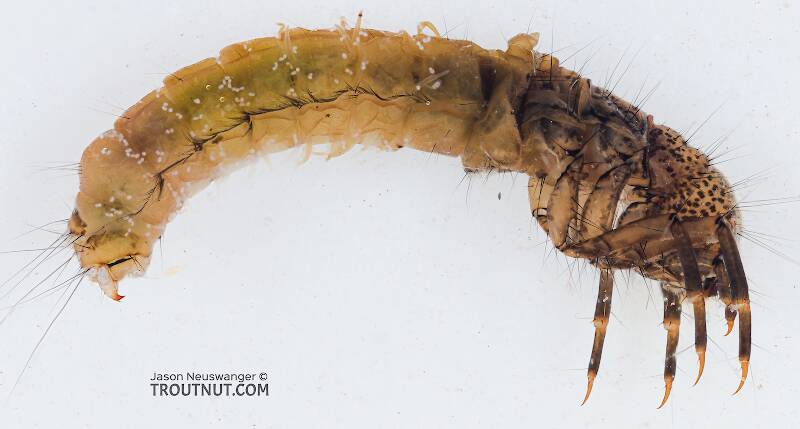
This one was surprisingly straightforward to identify. The lack of a sclerite at the base of the lateral hump narrows the field quite a bit, and the other options followed fairly obvious characteristics to Clostoeca, which only has one species, Clostoeca disjuncta.

Troutnut is a project started in 2003 by salmonid ecologist Jason "Troutnut" Neuswanger to help anglers and
fly tyers unabashedly embrace the entomological side of the sport. Learn more about Troutnut or
support the project for an enhanced experience here.
True Fly Family Tipulidae (Crane Flies)
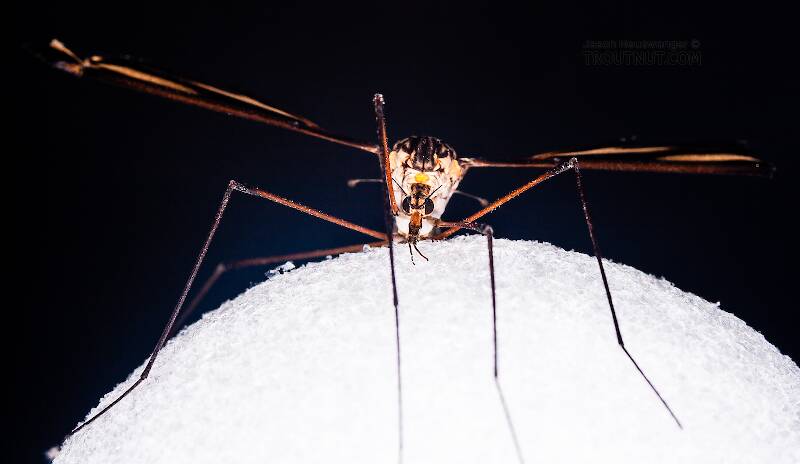
Hatching behavior
Craneflies pupate for one to three weeks. The species which do so in the water then swim to the surface to emerge in the style of caddisflies, and are presumably vulnerable to trout, though I have not read about good fishing during these events.Swisher and Richards in Selective Trout say the larvae all crawl out of the water to pupate, conflicting with the above account. There are so many species that it seems likely both behaviors occur in some species.
Egg-Laying behavior
Adult craneflies are occasionally important during their mating flights when their clumsy flying can crash them by accident into the water. Windy days may also blow them in.Larva & pupa biology
Diet: Mostly vegetation
They live as larvae for about a year and sometimes the larvae end up in the drift in good enough numbers to get the trout excited. Buggy grub-like flies are locally known to perform well on certain rivers, and this may be due to a good population of drifting cranefly larvae (or perhaps I speculate too far). In general, larvae are more likely to be important than the adults.
Ernest Schwiebert notes in Matching the Hatch that they are most common in trout stomachs after the water has been high.
Specimens of Crane Flies:
4 Adults
7 Larvae
1 Streamside Picture of Crane Flies:
Start a Discussion of Tipulidae
References
- Schwiebert, Ernest G. 1955. Matching the Hatch. MacMillan Publishing Company.
- Swisher, Doug and Carl Richards. 2000. Selective Trout. The Lyons Press.
True Fly Family Tipulidae (Crane Flies)
Taxonomy
5 genera (Brachypremna, Ctenophora, Holorusia, Nephrotoma, and Tipula) aren't included.


